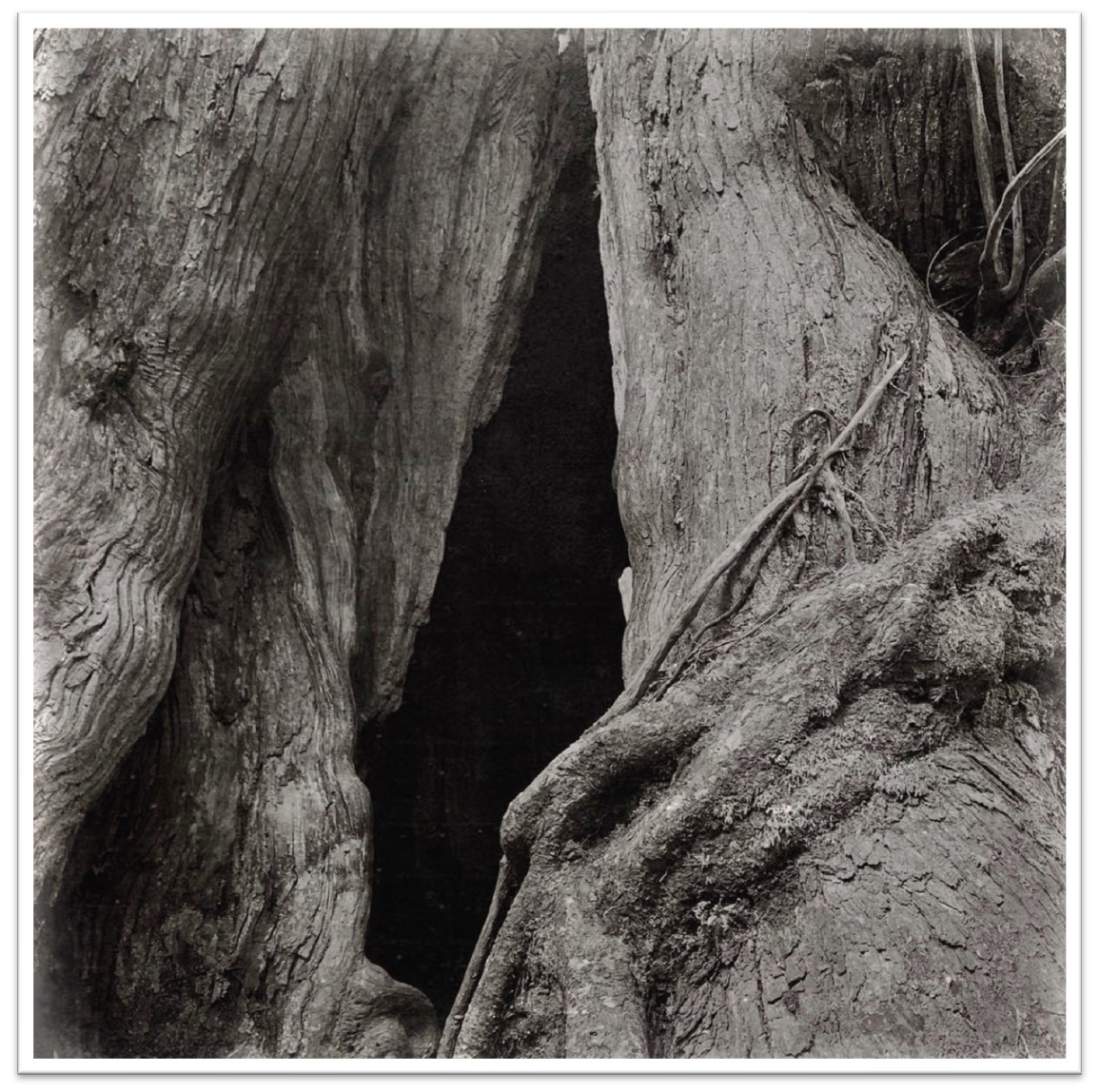
I moved on, I moved not, I let myself be moved. A movement that can reconfigure my perception of time and space? Not a movement, its rhythm. Not a rhythm, its spirit.
I found a note I made about a photograph I took of a 1000-year-old cedar tree: “The tree told me to move my camera so I don’t attempt to capture its form, but its spirit.”
The word “spirit” derives from the word “breath.” Could it be that the breath of the tree revealed itself in the shape of a vortex, a swirling form of energy, circular motion that communicated with me? Looking closely at the image, is it a vortex or a center? Or both?
A couple of minutes later into my walk, there was another tree into which one could truly enter. The entrance of a 1000-year-old tree.
I thought my work had no center from which it emerged. I know of the “rhizome.” I am yet to articulate the center of my work. I am aware now that even within the entanglement of thought, there must be a center that could be considered not a beginning or an end, but an entrance. An entrance as a center. An entrance into “a field of possibilities,” not an entrance into a fixed form, a fixed category of thought.
"He must allow such a center to emerge from the sound continuum," Umberto Eco tells us in the “Poetics of the Open Work.” The rhizome is a continuum where centers emerge. The center is an entrance. I awaken knowledge that generates centers, I listen, I find and follow paths with trust, then I propose alternative ways of moving around the knowledge. To impose a meaning on a form is also a way to awaken knowledge, subjective knowledge such as when I observe a landscape through my camera.
